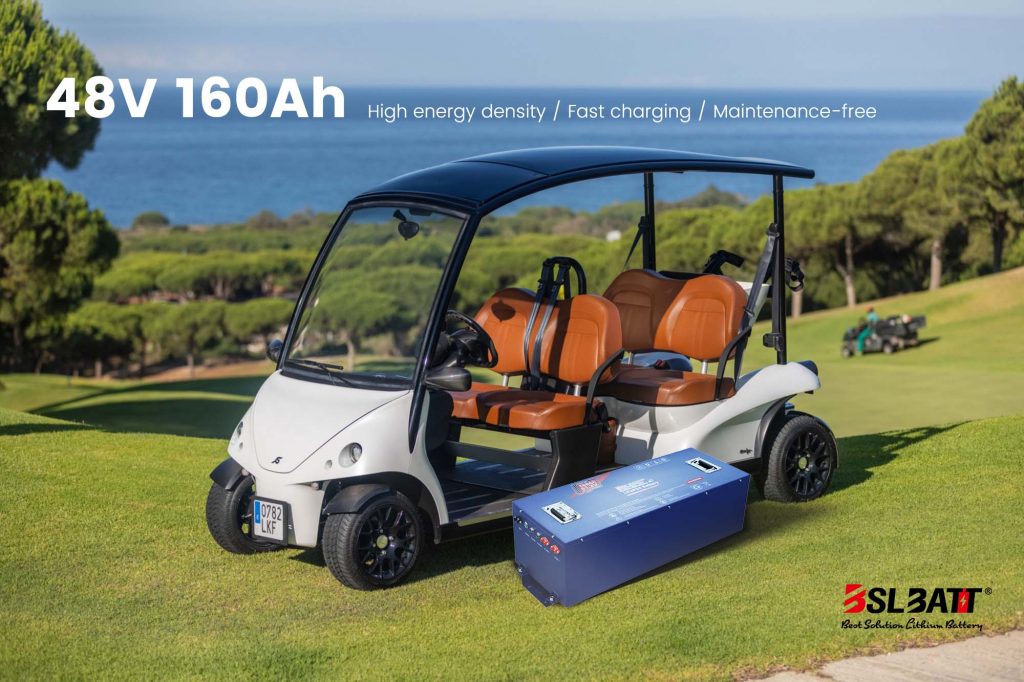Industry Application
Product Type
What To Look For In A 24 Volt Lithium Battery
| Lead-acid batteries have been the “go-to” power source for electronics, vehicles, and devices for many years. However, lithium-ion batteries are becoming a popular choice in several industries due to several features that improve efficiency and safety.
Unfortunately, not all batteries are created equal. There are two types of batteries most commonly used in such devices…lead-acid and lithium-ion. When choosing which one to use, it’s important to understand the difference between the two.
Which applications can use a 24 volt lithium battery?24 Volt Lithium batteries are available for six types of powered equipment: 2. Bass Fishing 5. Golf Cart For other types of applications, larger battery types are required. Lead-acid battery or lithium-ion battery? Lead acid or lithium-ion is a $50,000 problem for powering equipment. Deciding which one is the better choice comes down to some key differences between the two. Here are some of the key differences between lead-acid and lithium-ion batteries by category: charging process Charging a lead-acid battery can take over 10 hours, while a lithium-ion battery can take anywhere from 3 hours to as little as a few minutes, depending on the size of the battery. Lithium-ion chemistry can accept a faster current and charge faster than lead-acid batteries. This is critical for time-sensitive applications with high vehicle utilization and small rest intervals. For dock tractors, every minute a vessel is in port has a financial impact on the fleet owner, so batteries must be charged quickly to load the vessel during breaks. When it comes to charging, there isn’t much to compare. Maintenance Lead-acid batteries require a lot of maintenance. The battery must be watered weekly and the battery must be balanced regularly. Batteries must also be charged and stored in a well-ventilated room. Lithium-ion batteries require far less maintenance. Their batteries automatically balance as they charge, there are no fluid levels to monitor, and they can be charged in the device. Energy and range Comparing the two chemistries side by side, Li-ion has an energy density of 125-600+ Wh/L, while lead-acid batteries have an energy density of 50-90 Wh/L. In other words, if you drive the same distance with each type of battery in the same car, a lead-acid battery can be 10 times the volume of a lithium-ion battery, and it’s also heavier. Thus, using lithium-ion batteries can free up space for other important payloads, such as more passengers on a bus or more packages in an electric delivery truck. The high energy density also provides the vehicle with a longer range, which means users don’t need to recharge as often when powered by lithium-ion technology. Cost This is usually the topic of greatest concern to everyone and a key driver in deciding “what is the right product for my fleet?” Often, this is not an easy answer, and the cost-benefit really depends on the needs of your application. Lead acid is popular cost-effective battery chemistry that is available in large quantities without concern for the security of supply and is available in a variety of off-the-shelf package sizes. Lead acid is ideal for large stationary applications where space is plentiful and energy requirements are low. But when you start to consider the price of power or range, lithium-ion technology is often the more favorable option. The battle for the environment and personal safety Lithium-ion batteries are the symbolic gold in this category when it comes to saving the planet. The reason for this is that the main component of lead-acid batteries is lead. While the companies that sell these batteries have taken considerable steps to safely recycle them, it’s far from perfect. A negligent factory could end up exposing it to nearby communities, poisoning plants, and animals. In humans, the effects of lead poisoning range from brain damage to death. On a larger scale, a lot of lead mining happens to be making these batteries. This in turn consumes a lot of resources and destroys local habitats. Lithium-ion, while still presenting some dangers to people when used improperly (it’s a battery after all), is safer for the environment and the people who live in it. As for the regulations regarding the transpiration of these batteries, both have some pretty big limitations. For example, don’t think you can take any of these bad boys on a plane. Depth of discharge Depth of discharge refers to how much of the total capacity was used before charging the battery. For example, if you use a quarter of the battery capacity, the depth of discharge will be 25%. When using the battery, the battery will not be fully discharged. Instead, they have a recommended drain depth: how much can be used before refilling. Lead-acid batteries can only run to 50% depth of discharge. Go beyond that and you could negatively impact their longevity. In contrast, lithium batteries can handle deep discharges of 80 percent or more. This essentially means they have higher usable capacity. Service life The life of a lead-acid battery is about half that of a lithium-ion battery. Lead-acid batteries can be used for 1000 to 1500 cycles, while lithium-ion batteries can usually be used for 3000 to 5000 cycles. Power saving Lead-acid batteries use 100-year-old technology. As such, they have some inefficiencies compared to the relatively new lithium-ion technology. The benefits of a 24v lithium ion battery include higher continuous voltage and up to 50% energy savings. Continuous voltage means that devices powered by lithium-ion operate at full power, rather than losing power when the lead-acid battery is discharged.
By fire and weight scheme An important thing about a battery is how it works at different temperatures. After all, you want a car battery to handle the elements better than a device that stays inside all the time, right? Well, all batteries don’t like to be too hot or too cold: this can cause them to charge incorrectly and lose cycle life. However, lithium ions also have some dangers when it comes to heat: they can experience a phenomenon called thermal runaway. Thermal runaway occurs when a battery cannot get proper ventilation and the flammables in it start to burn. This, in turn, can cause the device the battery is in to catch fire or explode. This is a rare situation and is more likely to occur in smaller devices like laptops or headphones (with larger power demands on smaller batteries). Regardless, it’s still something to be cautious about. Don’t rule out lithium-ion batteries, though: they run much better at low temperatures than lead-acid batteries. While lead acid batteries can be charged at lower temperatures, they don’t charge very well (at least compared to lithium batteries at the lowest rechargeable temperature). Lithium also wins in basis weight. Lithium-ion batteries are lighter than lead-acid batteries. This makes it easier for consumers to transport these batteries. After all, who wants to feel like they’re in a weightlifting competition every time they haul a battery around? Battery management system Battery management systems are used to electronically control and regulate the charging and discharging of batteries. It should be noted that battery management systems are available for both Li-ion and lead-acid batteries. The 24 Volt Lithium Battery quality battery management system oversees the following aspects of the battery: ● Battery and battery health ● Mains voltage ● Charge and discharge rate ● Battery and battery temperature ● Battery and battery voltage ● Coolant temperature and airflow/liquid cooling The 24v lithium ion battery management system ensures that the battery operates at peak efficiency for as long as possible, even if the battery is not fully charged. By monitoring and regulating the above aspects of the battery, the battery management system helps extend the life of the battery and helps you get the most out of the battery.
Bottom Line Just to recap, lithium-ion batteries are lighter, are more efficient, last longer, recharge faster, cost less over their lifetime, maintain voltage more effectively, are easier to use, and require less maintenance. It shouldn’t come as too much of a surprise. Lithium-ion technology is cleaner, more efficient, and less costly over time. |
A Guide to Choosing the Best 48V Lithium Golf Cart Battery
Would it be worth investing in a 48V ...
10 Exciting Ways To Use Your 12V Lithium Batteries
Back in 2016 when BSLBATT first began designing what would become the first drop-in replacemen...
BSLBATT Battery Company Receives Bulk Orders from North American Customers
BSLBATT®, a China Forklift battery manufacturer specializing in the material handling indust...
Fun Find Friday: BSLBATT Battery is coming to another great LogiMAT 2022
MEET US! VETTER’S EXHIBITION YEAR 2022! LogiMAT in Stuttgart: SMART – SUSTAINABLE – SAF...
Looking for new Distributors and Dealers for BSL Lithium Batteries
BSLBATT battery is a fast-paced, high-growth (200% YoY ) hi-tech company that is leading the a...
BSLBATT to Participate at MODEX 2022 on March 28-31 in Atlanta, GA
BSLBATT is one of the largest developers, manufacturers, and integrators of lithium-ion batter...
What makes the BSLBATT the Superior Lithium Battery for your Motive Power needs?
Electric forklift and Floor Cleaning Machines owners who seek the ultimate performance will fi...
































